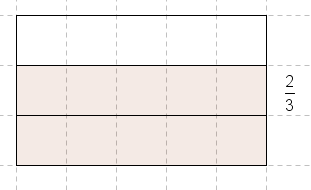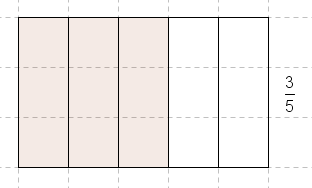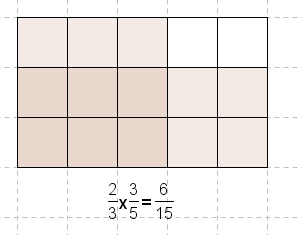Multiplication of Fractions
Before algebra was invented, mathematicians in the early times represent mathematical expressions, equations, and proofs geometrically and verbally. In this post, we do the same: we explore a geometric representation of multiplication of fractions. I am not sure though if this strategy was used before.
We have discussed that the area of a rectangle is the product of its base and its height. A rectangle with base 5 units and height 3 units has area 15 square units.
This method can be extended to fractions. For example, how do we represent the multiplication of and
?
First, we represent the rectangle as a whole, then represent the fraction by dividing the rectangle horizontally into equal parts. Then, we shade the fractional part as shown. Two thirds is represented by two shaded rectangles out of three.
 We do the same with our second fraction. We represent a whole with a rectangle with the same size and shape as that of the rectangle above. We then divide the rectangle vertically and shade three rectangles out of the five to represent three fifths.
We do the same with our second fraction. We represent a whole with a rectangle with the same size and shape as that of the rectangle above. We then divide the rectangle vertically and shade three rectangles out of the five to represent three fifths.
To multiply the two fractions, we overlap the two rectangles. The number of squares formed is 15 and the number of shaded squares that intersect is 6.
Therefore,
.
Of course, instead of drawing two rectangles and overlapping, we can just draw one rectangle, and divide and shade them vertically and horizontally.


